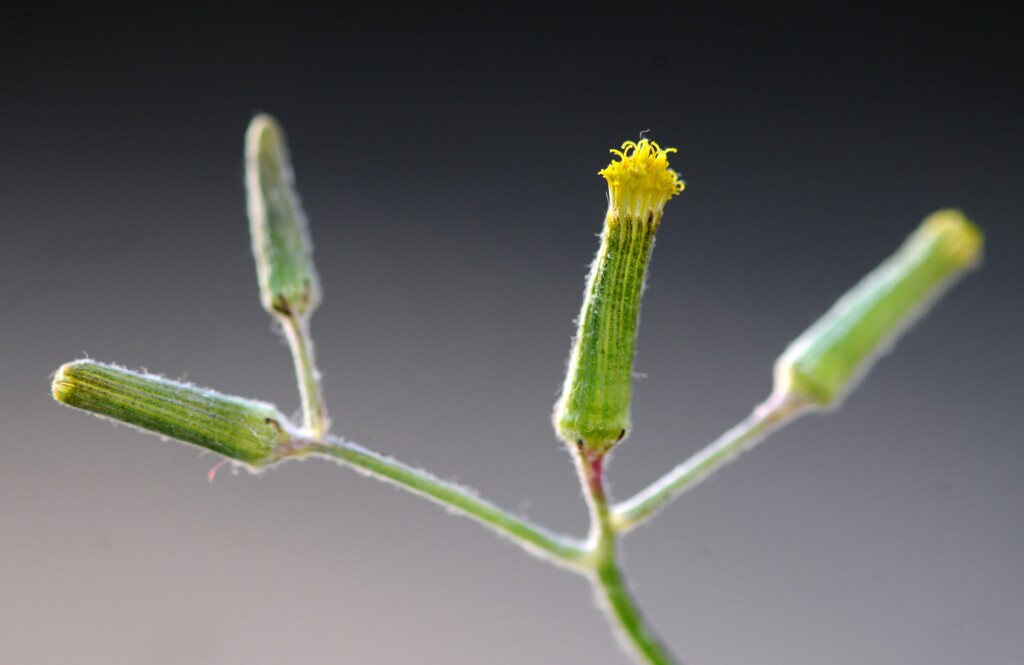Senecio quadridentatus
Labill. Cottony FireweedErect or ascending herb to c. 100 cm high, usually branched from or near base, arising annually from a perennial rootstock; stems (and often foliage) densely white-cottony. Leaves sessile, not or hardly auriculate, linear to narrowly oblanceolate, 4–12(–16) cm long, 2–8(–15) mm wide, usually remotely (sometimes minutely) dentate but margins revolute and leaf then appearing entire; upper surface white-cottony or sometimes glabrescent; lower surface (usually densely) white-cottony. Inflorescence corymbose, typically with 40–300 capitula; capitula non-radiate; involucre narrowly cylindric, 7–10 mm long, usually slightly cobwebbed near base, sometimes glabrous; bracts 10–13; bracteoles present; florets 20–40, bisexual and unisexual. Cypselas narrow-fusiform, more attenuated apically than basally (rarely c. cylindric), 2.5–3.5(–4) mm long, reddish, greenish or dark brown, minutely papillose hairy in narrow rows; pappus of slender hairs 5–8 mm long, deciduous. Flowers mostly Sep.–Feb.
LoM, MuM, Wim, GleP, VVP, VRiv, MSB, RobP, MuF, GipP, OtP, WaP, Gold, CVU, GGr, DunT, NIS, EGL, EGU, WPro, HSF, HNF, OtR, Strz, MonT, HFE, VAlp. All States. New Zealand, New Caledonia, Timor. Widespread and common except on waterlogging and/or highly fertile soils.
Surprisingly uniform in morphology, but a local variant on the volcanic plain just west of Melbourne having relatively short leaves with dark shining green upper surfaces, and a form with relatively broad leaves, largely confined to mallee areas, are noteworthy. Sometimes difficult to distinguish confidently from S. tenuiflorus, but the more tapered cypsela and the more or less appressed cottony indumentum on the leaf undersurfaces are the strongest distinguishing characters. Some 'difficult' specimens are doubtlessly the result of hybridization with closely related species.
Walsh, N.G. (1999). Senecio. In: Walsh, N.G.; Entwisle, T.J., Flora of Victoria Vol. 4, Cornaceae to Asteraceae, pp. 941–965. Inkata Press, Melbourne.
 Spinning
Spinning




